Assistive Technologies – Readings in Review
Models of Disability
Understanding Disability Models Infographic: this infographic was constructed to help individuals better understand the various models of disability which exist within the literature, and within society. There are six dominant models of disability that are described in this infographic. This visualization also provides insight in some of the criticism faced by the various models of disability.
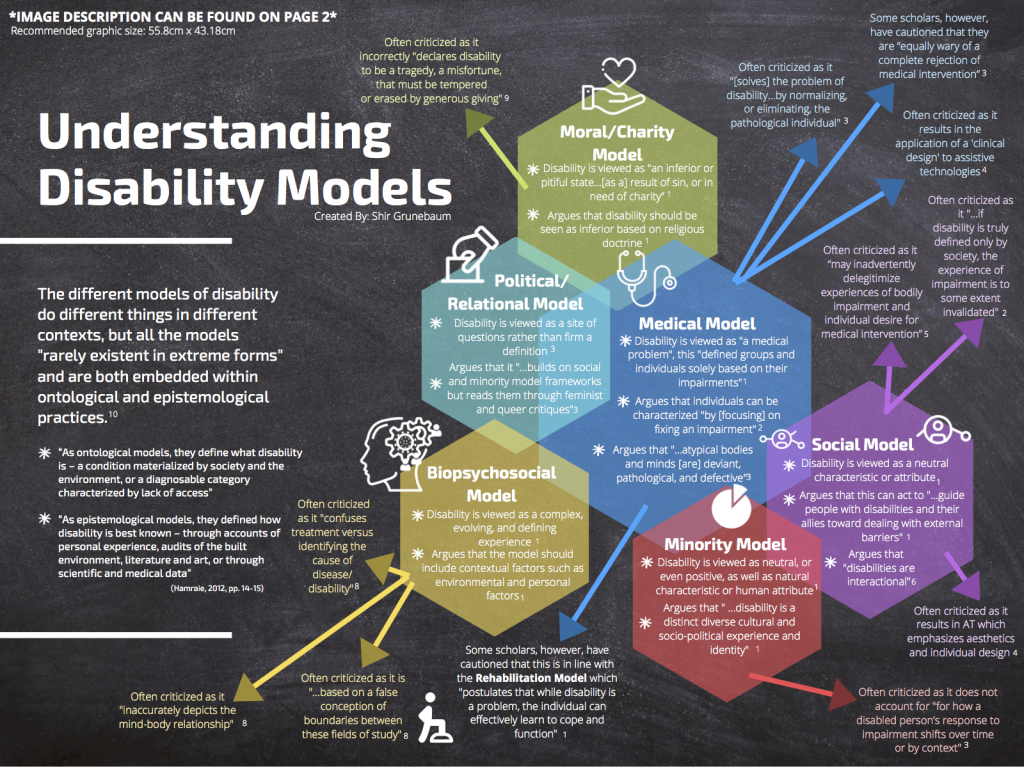
(Please note that an accessible version of this infographic can be found on the attachment above. The attached pdf is enhanced for accessibility, uses anchors, and also has a complete image description that can be found on page 2.)
Design Methodologies & Ethos:
The subject of design is one that dominates the disability literature Throughout the past number of years, there has been a push among researchers and advocates to think critically about the ways in which design is executed and by whom. This research snapshot provides a condensed understanding of the dominant design methodologies and ethos. Further, this research snapshot provides insight on some of the criticisms faced by each type of design. The second downloadable file is a word document of the same file which utilizes complete accessibility features.
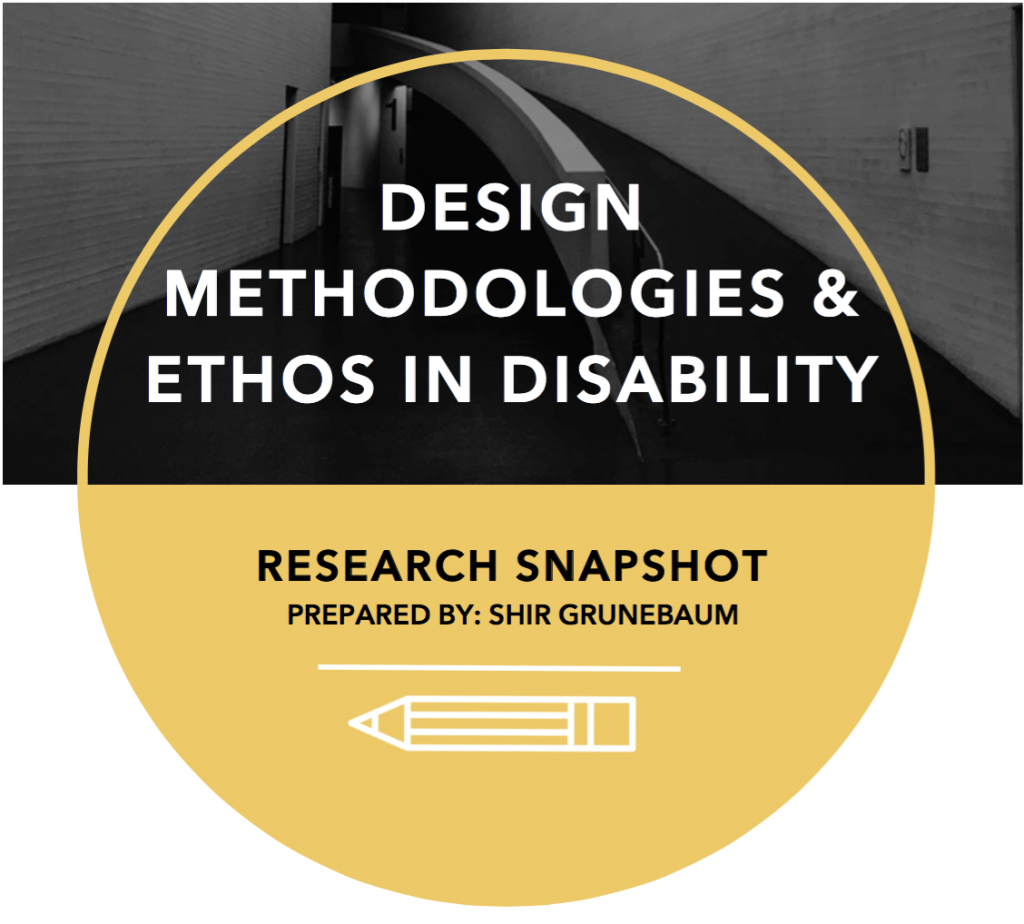
(The above image simply provides visual interest to this webpage. In order to access the research snapshot, please download one of the above files. The second file, a word document, is the best accessible version as it uses image descriptions and provides access to the full accessibility features.)
Identity-First vs. Person-First Language
Recently, the use of person-first versus disability-first language has prompted significant discussions in journalism, the media, as well as scholarly writing. This is a very sensitive yet important discussion, specifically with the ability/disability community in which “a long history of erasure, exploitation, stigma, and misunderstandings has led to strong emotions about how people with disabilities – or disabled people – are identified and discussed” (Halle, 2019). This research snapshot provides readers with a condensed summary of the arguments made by both the person-first and the identity-first bodies of thinking. Additionally, this research snapshot provides guidance for researchers on the type of language that they should select, and the factors they should consider in selecting either person-first or disability-first terminology.
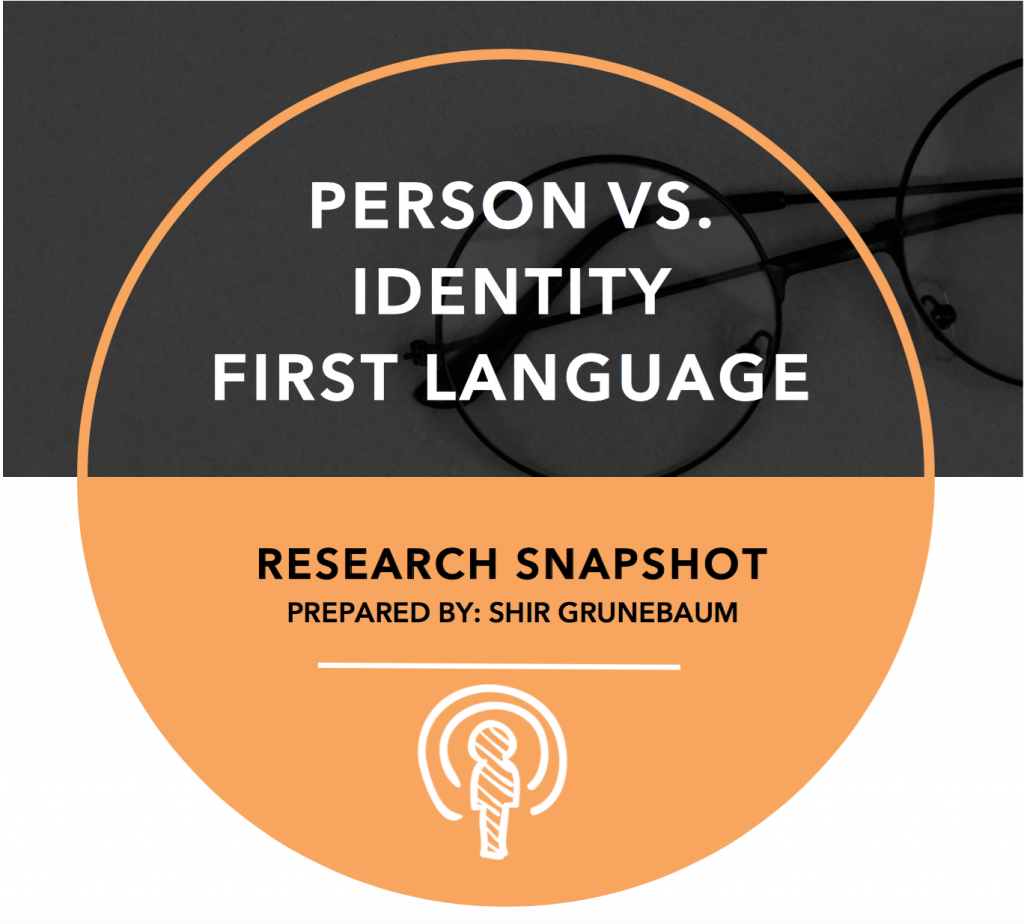
(The above image simply provides visual interest to this webpage. In order to access the research snapshot, please download one of the above files. The second file, a word document, is the best accessible version as it uses image descriptions and provides access to the full accessibility features.)
Disability Studies as a Source of Critical Inquiry for the Field of Assistive Technologies
This research snapshot provides a more approachable means for researchers and scholars to understand a critical text that should be used to inform all assistive technology development and teachings. By presenting this information graphically in a summarized manner, this research snapshot hopes to encourage others to engage with such important literature. Further, this research snapshot takes the work of Mankoff, Hayes, & Kasnitz another step forward by integrating valuable insights provided by Science and Technology Studies (STS) scholars.
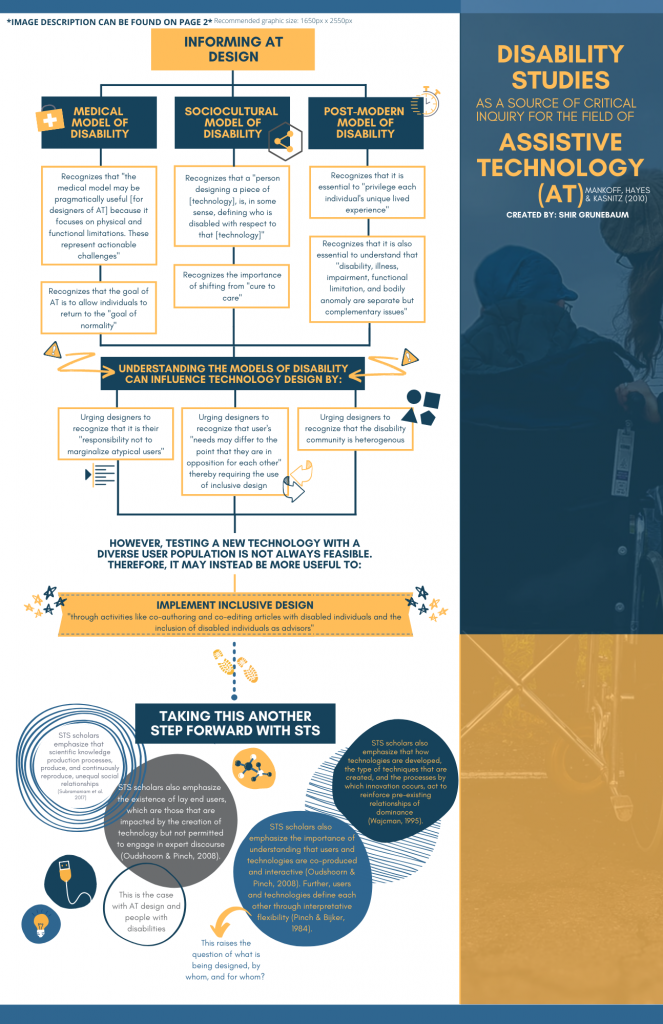
(Please note that an accessible version of this infographic can be found on the attachment above. The attached pdf is enhanced for accessibility, uses anchors, and also has a complete image description that can be found on page 2.)
Shortcomings of Original White Cane
This infographic, based on a study conducted by Meshram, Patil, and Shu (2019) provides critical insight into the various limitations of the original white cane. The study identified that some of the most prominent shortcomings include: the white cane did not provide sufficient information about the surrounding environment, the white cane does not detect head level obstacles, the white cane does not provide knowledge of descending stairs or wet floors. This study also identified that individuals with visual impairments or blindness need to identify objects and colours, and feel that an alternative device should provide audio feedback about obstacles. At the bottom, this infographic provides an opportunity to engage in critical thinking about the generalizability of this study, as well as its implications.
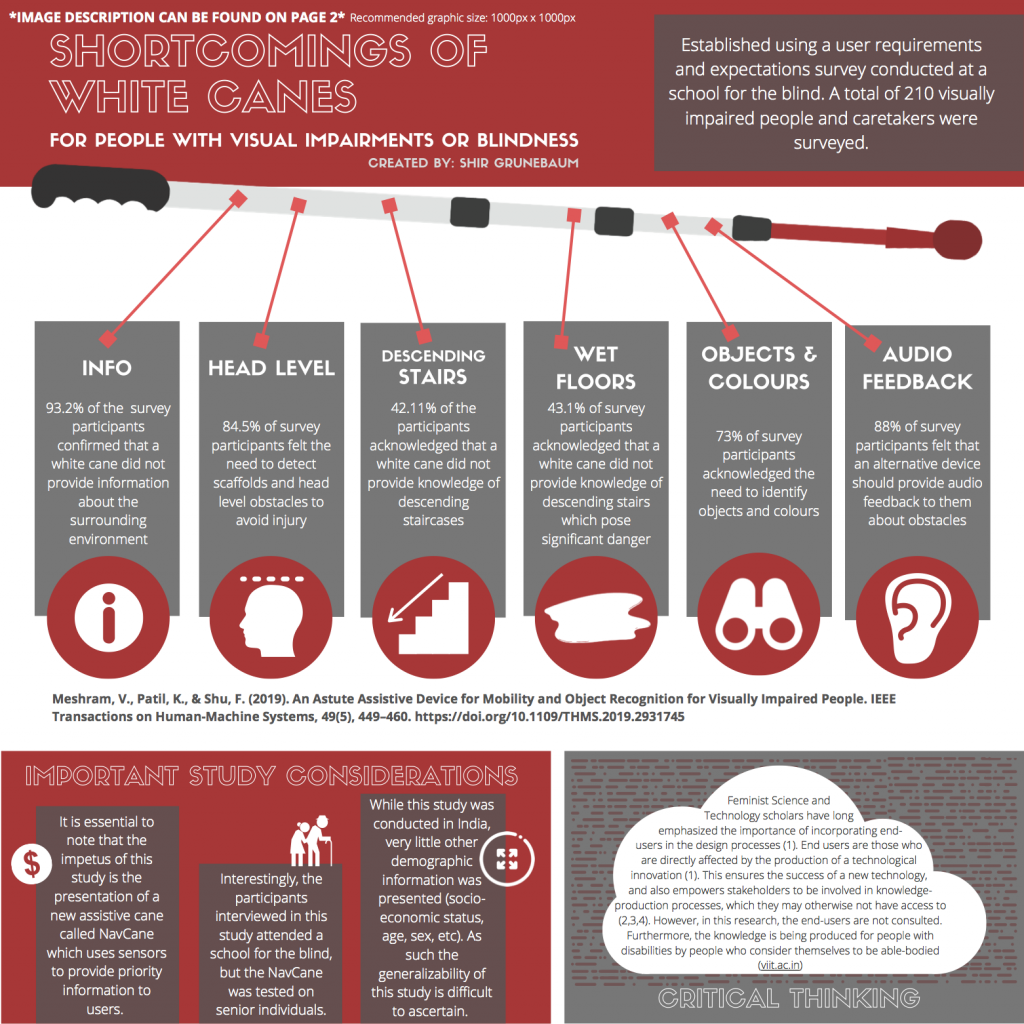
(Please note that an accessible version of this infographic can be found on the attachment above. The attached pdf is enhanced for accessibility, uses anchors, and also has a complete image description that can be found on page 2.)
Motivations of AT Entrepreneurs
This infographic, based on the study conducted by Fels & Gideon (2011) provides important insight into the motivations of entrepreneurs in the assistive technology market. Importantly, this study identified that 9% of the assistive technology entrepreneurs identified in this study had a disability themselves, and 43% of participants indicated that they started their business because they, or someone close to them, had a disability. At the bottom, this infographic also provides a platform for critical thinking about this study and its findings.
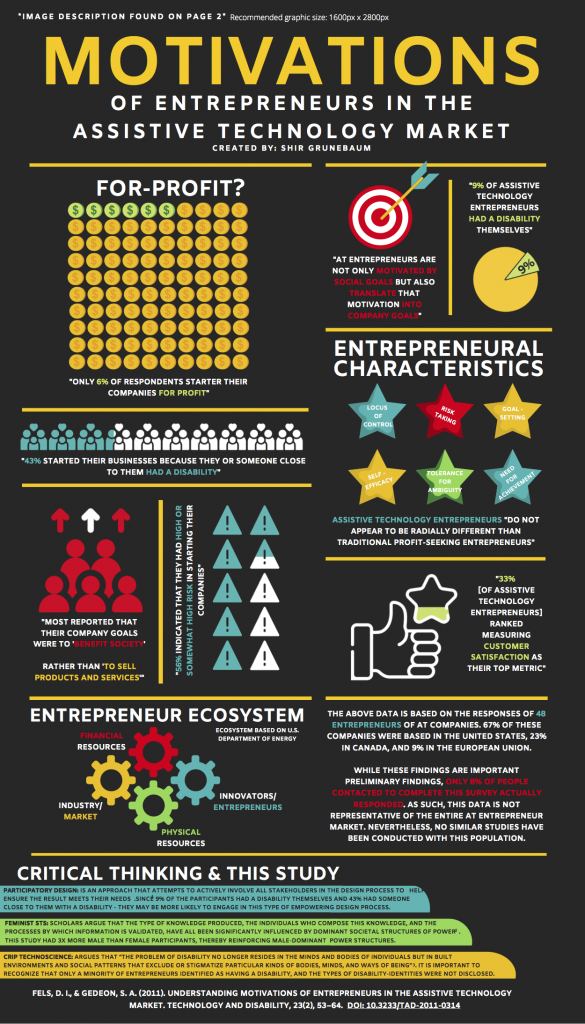
(Please note that an accessible version of this infographic can be found on the attachment above. The attached pdf is enhanced for accessibility, uses anchors, and also has a complete image description that can be found on page 2.)
